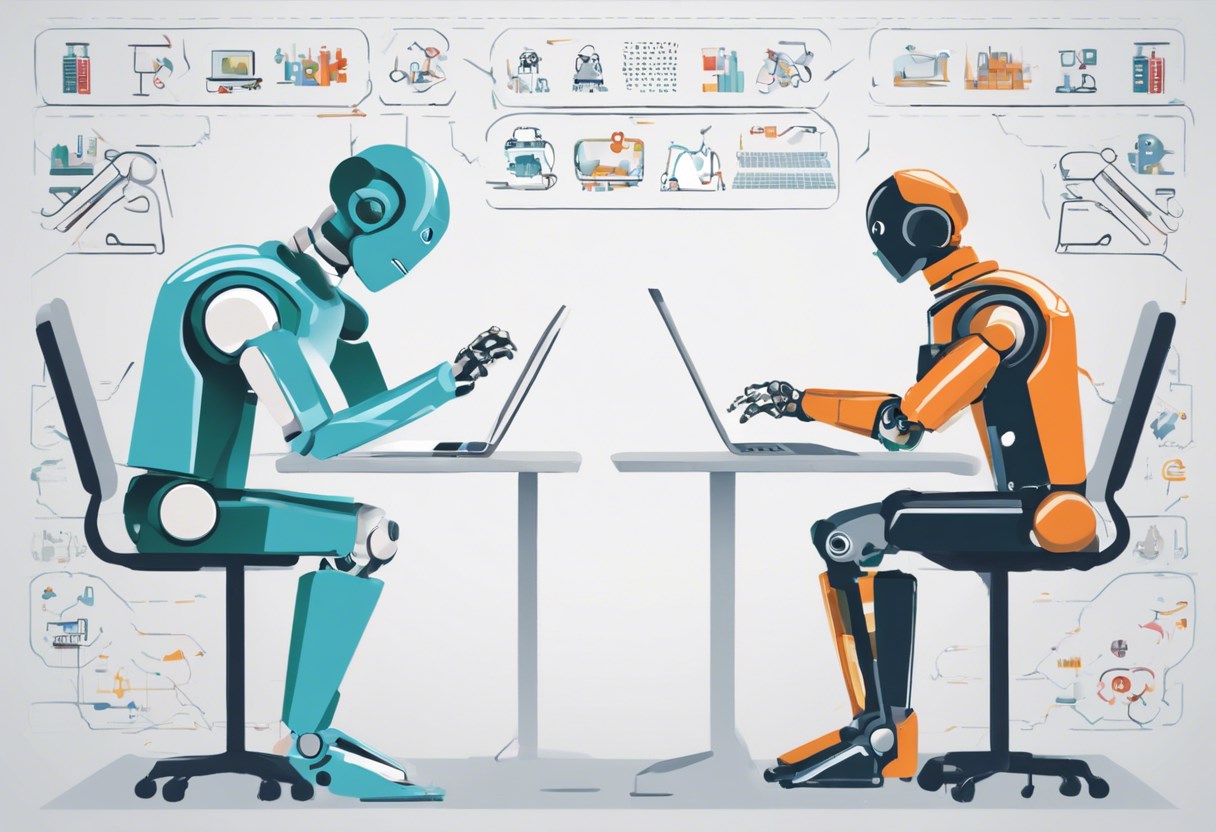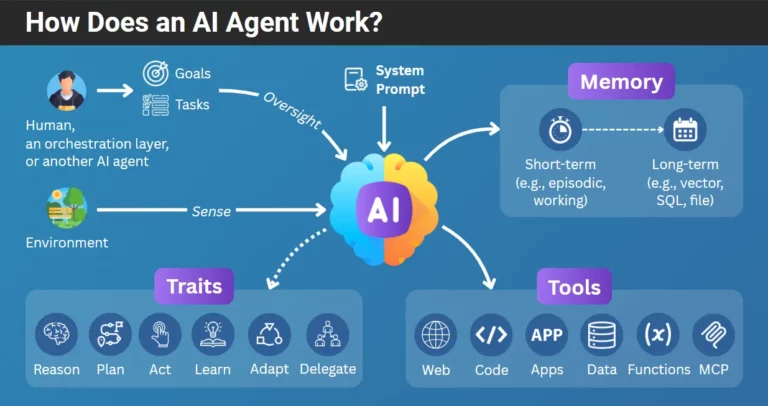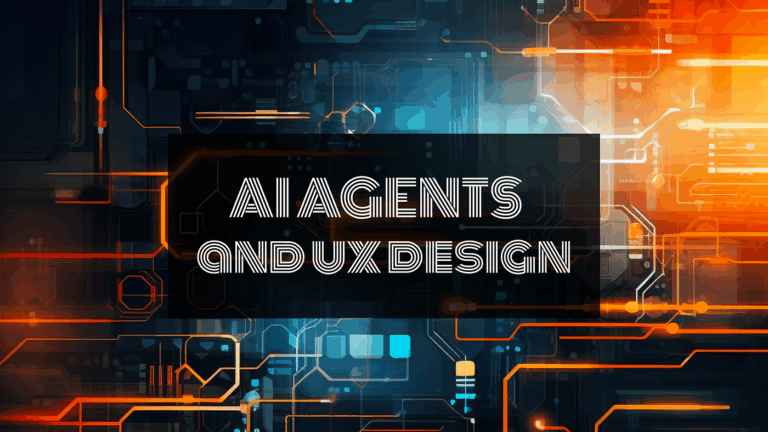
The question used to be simple: robots would take over factories, and office jobs were safe. But in 2024–2025, the tables have turned. Coders, marketers, writers, analysts, consultants—many are watching AI automate parts of their work. Ironically, the people who sit at desks, once considered “safe,” may be the first to face serious disruption.
So how did we get here? And what does it mean for the future of labor?
Why Knowledge Work Became Vulnerable
Routine meets intelligence
White-collar jobs are often repetitive—even if cognitively complex. Think about what a financial analyst does: builds spreadsheets, writes reports, checks metrics, and forecasts. These are structured tasks. Once AI models could read, write, code, and reason with data, they could do a lot of that work—faster, cheaper, and without breaks.
Even lawyers, long considered irreplaceable, now see AI summarizing contracts, generating legal drafts, and predicting outcomes based on case law.
The illusion of “creative immunity”
There was a belief that creative work—design, writing, content strategy—would be immune. But generative AI has flipped that script. Tools like ChatGPT, Midjourney, and Runway now create compelling text, imagery, even videos.
These systems don’t need to be perfect. They just need to be good enough for most business use cases. A CEO might prefer an instant AI summary over waiting 3 days for a human-written one.
That shift in expectation is what’s changing everything.
What’s Happening in the Office Now
AI assistants are everywhere
From Microsoft Copilot in Excel and Word to Notion AI, AI is being woven into the daily tools we already use. Most people don’t even realize how much is automated now. Email drafts, meeting notes, data summaries—it’s all AI-assisted.
This creates an efficiency ceiling: if you’re not using these tools, you’re slower. If you are, you’re producing more with less. But then companies start asking: do we still need the same number of people?
Job descriptions are shifting
Marketers now need prompt engineering skills. Analysts are expected to validate AI-generated reports instead of building them from scratch. Junior roles in copywriting or support are vanishing, replaced by AI systems monitored by a few senior staff.
This means job titles stay the same, but the actual tasks change fast. Adaptability is no longer optional.
Blue-Collar Resilience
Why physical jobs remain safer (for now)
Jobs that require mobility, dexterity, or physical presence—construction, plumbing, caregiving—are harder to automate. Robotics is advancing, but slowly. Teaching a robot to fix a broken pipe or comfort an elderly person is far more complex than writing a code snippet.
Also, these roles involve human nuance and trust. A nurse or electrician earns that trust through presence, not just competence.
But it’s not black and white
AI is coming for parts of blue-collar work, too. Logistics companies use AI to optimize routes. Construction firms use AI drones to monitor progress. Warehouse work is increasingly managed by predictive software.
Still, full replacement is far off. The physical world, with its complexity and unpredictability, is AI’s greatest limitation—for now.
What Workers Should Be Doing Right Now
Embrace augmentation
Don’t compete against AI—work with it. Learn how to prompt it, guide it, edit its outputs. The new skillset is not just knowing your job, but knowing how to use AI to multiply your output.
If you’re a designer, know how to use Midjourney as a sketching partner. If you’re a writer, let GPT structure first drafts. If you’re in support, use chatbots to handle FAQs while you focus on complex cases.
Learn how to review, not just create
AI will do the grunt work. You’ll be paid for your judgment. Can you tell when the AI is wrong? Can you detect nuance? Can you improve its work, ethically and strategically?
This “editor mindset” is a core survival skill for modern knowledge workers.
Build irreplaceable traits
Critical thinking, emotional intelligence, negotiation, leadership—these human traits are harder to automate. The more your role relies on human connection, trust, or judgment, the longer you’ll stay relevant.
What Companies Should Think About
Layoffs aren’t the only option
Just because AI can do more doesn’t mean companies should cut staff. Reassigning people to higher-value tasks, customer experience roles, or strategic initiatives can yield better long-term gains.
Plus, layoffs lead to knowledge loss, morale damage, and brand risk. AI should be a tool for growth, not just for cutting costs.
Ethical automation matters
Who decides which jobs get replaced? Are employees being upskilled or discarded? Is AI reinforcing biases in hiring or performance reviews?
Organizations that automate ethically—by being transparent, investing in people, and communicating clearly—will attract better talent and long-term trust.
Future Scenarios
- The Hybrid Office: AI handles 60–70% of operational work. Humans focus on client relationships, strategy, innovation.
- The Micro-Expert Economy: Freelancers and solopreneurs use AI to operate like mini-agencies, powered by intelligent agents.
- The Divide Widens: Those who adapt and adopt AI thrive. Those who resist it fall behind.
- Blue Becomes White: Some physical jobs become knowledge jobs (e.g., a truck driver who manages a fleet of autonomous vehicles).
- Human Work, Reimagined: Jobs centered on trust, creativity, and ethics become the most valuable.
No One Is Fully Safe—And That’s Okay
The future isn’t about “AI vs. humans.” It’s about “humans who use AI” vs. “those who don’t.” It’s about redefining work around what only people can do—and using technology to amplify that.
White-collar workers may face faster disruption—but they also have faster access to tools, training, and transformation. Blue-collar workers may have more time—but need to prepare for long-term changes too.
In both cases, the answer isn’t fear. It’s reinvention.







